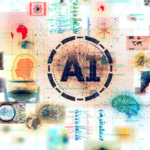Generative AI: A Guide to Unlock Your Potential3 min read
Although it is the most talked-about topic of the moment, there are still perhaps many details regarding AI that not everyone knows. So let’s take a look at how we can use this resource and reach our full potential in business or otherwise.
What is Generative AI?
Let’s start with a definition: generative AI refers to a type of artificial intelligence capable of generating text, images or other media using generative models. Generative AI models learn the patterns and structure of incoming training data and generate new data with similar characteristics.
Unlike some AI approaches that focus on learning from existing data to accomplish specific tasks (such as image recognition or language translation), generative AI aims to generate new data that has not previously been present in the training set.
Some common techniques used in generative Artificial Intelligence include Generative Adversarial Networks (GANs) and Variational Auto-Encoders (VAEs): such approaches allow models to learn to generate data realistically and consistently through an iterative training process.
How Generative AI Works
The system behind Artificial Intelligence is based primarily on data collection from various sources, such as text documents or images: these are then inserted into an algorithm that creates a model that can be used to generate new content or recognise patterns of operation in the original data set. The output generated may vary depending on the type of generative Artificial Intelligence used; it could be literally anything, from predictions based on certain text to visual representations of objects in a larger picture.
The Possible Applications of Generative AI
Although the definition in itself may appear rather complex and full of technicalities, in reality the application of generative AI is much simpler than it might at first appear.
To date, there are countless fields of application of this innovative technology, among which it is worth mentioning:
- Recognition and Generation: Generative Artificial Intelligence can be used for image recognition tasks, such as facial recognition or the detection of particular objects within the images themselves. It can also generate incredibly realistic images from scratch based on existing pictures, combining elements from different sources or adding details that were not present before. Often just a few words (the so-called “prompt”) are enough to create spectacular results. As an example, AI Art really does an excellent job;
- Business Tasks: Generative Artificial Intelligence is becoming increasingly popular in the corporate world as well. It can be used for a variety of tasks, such as improving and automating customer service, and creating content (such as in the case of the SEO Article tool) and personalised services based on the characteristics of the end user;
- Automation and robotics: Generative Artificial Intelligence can also be applied to the field of robotics: it allows robots to learn the way objects interact with each other through simulations, rather than relying exclusively on pre-programmed instructions. This tool is even being tested for use in cars: over time it could increasingly help us ensure greater safety on the roads, minimising the risk of dangerous accidents.
Conclusions
It is therefore clear that Artificial Intelligence currently has exceptional potential which would certainly be worth investigating immediately so as not to risk being left behind.
Services like Contents.ai can prove invaluable because they allow the creation of various types of content and the generation of unique illustrations and designs through AI, and ultimately allow businesses to increase efficiency and precision in their marketing strategy.




